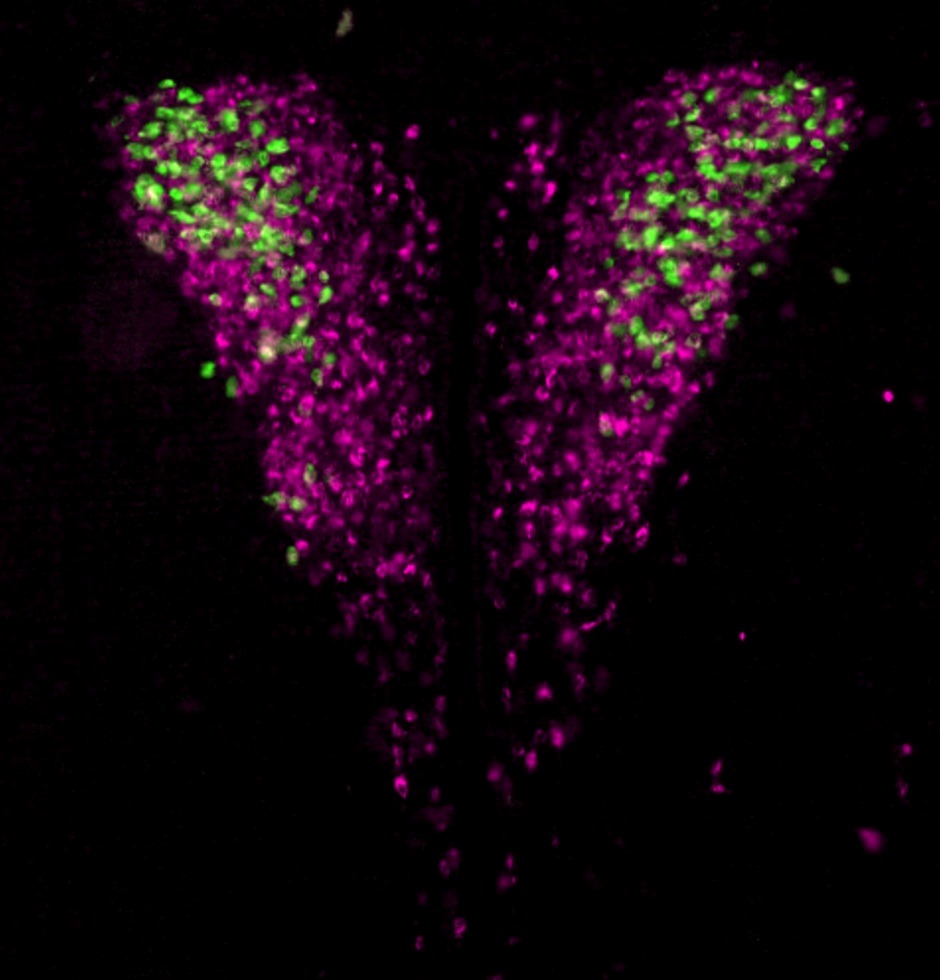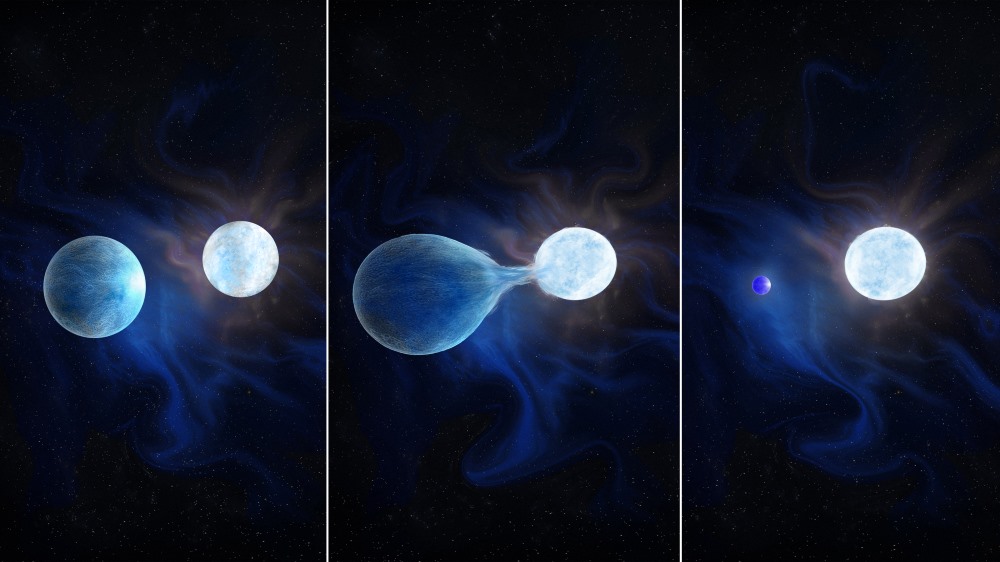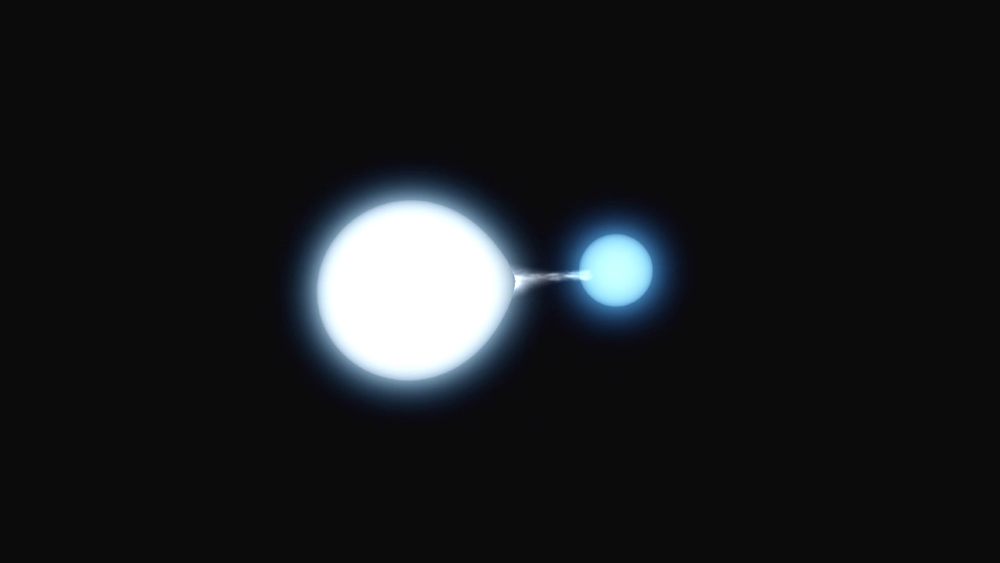September 4, 2025
Stress & Stars: Two ERC Starting Grants for ISTA
Three million Euro in EU funding for Assistant Professors Amelia Douglass and Ylva Götberg
Two Assistant Professors at the Institute of Science and Technology Austria (ISTA) have won European Research Council (ERC) Starting Grants of 1.5 million Euro each to pursue their potentially groundbreaking work in astrophysics and neuroscience. These prestigious grants empower scientists at the beginning of their careers to launch projects, form teams and explore their best ideas.

Neuroscientist Amelia Douglass looks into how animals react to stress – both behavioral and physiological – to ensure their survival. Astrophysicist Ylva Götberg researches pairs of stars in which one ‘steals’ the hydrogen-rich envelopes of its companion, leaving the helium core exposed.
Biological bodies reacting to stress
Amelia Douglass, originally from Australia, obtained her PhD in Germany before becoming a postdoctoral research fellow at Harvard Medical School (USA) and joining ISTA this past June. She will use her funding to work on a project titled “The hypothalamic control of behavioral and physiological adaptations to stress.” Known in short as “HypoAdapt,” it aims to find out what happens when animals encounter challenges such as an attacking predator, unpleasantly warm or cold temperatures, or even pathogens.

“We will use mice as a model to study how the brain controls the way animals adapt their behavior and physiology – such as heart rate or respiration – to challenges in the environment,” explains Douglass.
“We want to understand the brain-driven adaptations to these threats at two different levels: First, we want know how these responses are so rapidly executed when a challenge is encountered. This is important because it ensures that the animal can survive the threat. And secondly, we also look into how threats have lasting effects on behavior and physiology in more chronically stressful situations.”

The research results could ultimately benefit people.
“There are strong similarities between mice and humans, both at the level of the brain and also at the level of behavior and physiology,” says Douglass. “Therefore, hopefully what we learn from studying mice will allow us to learn something about how these brain pathways are disrupted in humans suffering from anxiety and stress.”

Douglass will use the ERC funding to expand her research group with additional postdocs and PhD students — and to dig deeper.
“This allows me to pursue even more ambitious research questions than I otherwise would have. This grant, plus the second-to-none scientific support at ISTA, will set my lab up to make exciting discoveries.”
Celestial bodies stripping each other
Ylva Götberg, originally from Sweden, did her PhD in the Netherlands before joining the Carnegie Observatories in Pasadena (USA) where, most recently, she worked as a NASA Hubble Postdoctoral Fellow. She joined ISTA in 2023 and was named one of TIME magazine’s 100 Emerging Leaders in 2024. She will use her grant to work on a project titled “The Role of Binary-Stripped Stars: from Atomic Scales to Cosmic Dawn.” Known as “2SStars,” it will delve into the science around new types of stars that only existed in theory until 2023 — when Götberg and colleagues confirmed their predicted existence with observations.

“Binary-Stripped Stars are a duo of stars in which the hydrogen-rich envelopes are transferred from one companion star to the other, leaving the first one’s helium core exposed,” explains Götberg.
All in all, a third of all massive stars are expected to face that fate.
“These stripped stars are thought to be the main progenitors of hydrogen-poor supernovae. They also constitute two necessary steps in the formation of neutron stars that merge and emit a burst of gravitational waves. Furthermore, they also contribute to cosmic reionization,” Götberg says.

“Over half a century these stars were just a theory. With us having recently confirmed their existence, theoretical models can now face reality and observational benchmarks. We will challenge theory with observation to understand: What is the role of stripped stars in binary star evolution? And how can stripped stars be used to understand different parts of astrophysics? We will study the stripped star binaries in detail to obtain measures for example for stellar winds, mass transfer efficiency and X-ray emission.”

Götberg and her group will also make use of data from several upcoming space missions related to both the ultraviolet (UVEX) and milli-hertz gravitational wave regimes (LISA) to learn more about ‘their’ newest type of star, thereby improving our overall understanding of (astro)physics.
ISTA’s continued success with ERC grants
Despite only opening its doors in 2009, the Institute of Science and Technology Austria (ISTA) is one of the most successful research institutions in Europe when it comes to receiving grants from the European Research Council (ERC). While the average success rate for ERC frontier grants typically falls between 8% and 15%, ISTA can boast an impressive 47%. With Douglass and Götberg, 82% of ISTA’s professors have now received one or more ERC grants.



